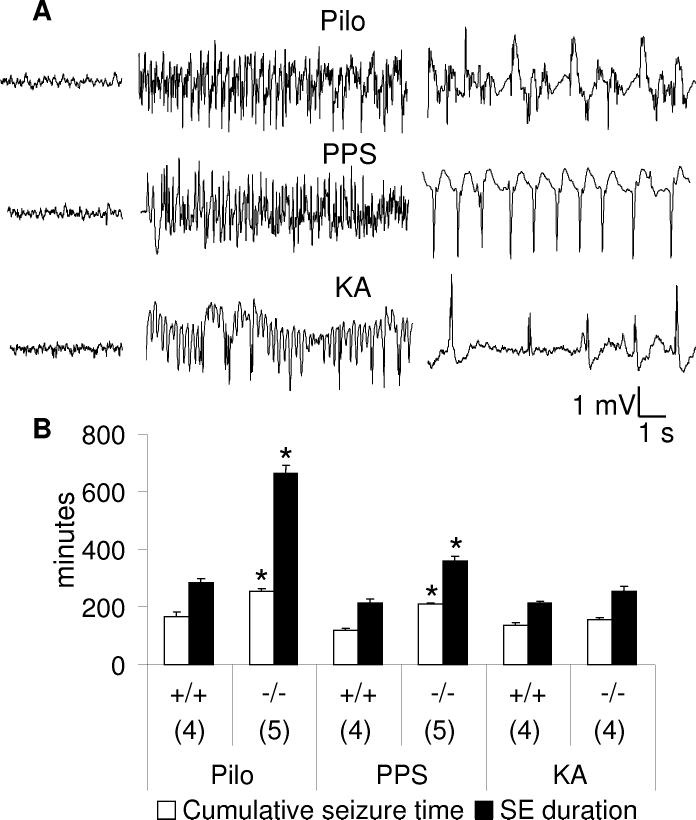Fig. 1.
Comparison of three models of status epilepticus in wild type (+/+) and GalR1 knockout (-/-) mice. A. Examples of seizure activity during SE induced by Li-pilocarpine (PILO, top row), perforant path stimulation (PPS) (middle row) and kainic acid (KA, bottom row). Left panels-baseline activity prior to seizure induction; middle panels- seizures, right panels- inter-seizure activity.B. Statistical analysis of SE. Numbers on the X-axis show number of animals in each group. Data are presented as Mean±SEM. *-p<0.05 vs. respective +/+ treatment (Two-Way ANOVA + Bonferroni T-post hoc test). SE induced by both Li-pilocarpine and PPS was more severe in GalR KO, than in wild type mice.

